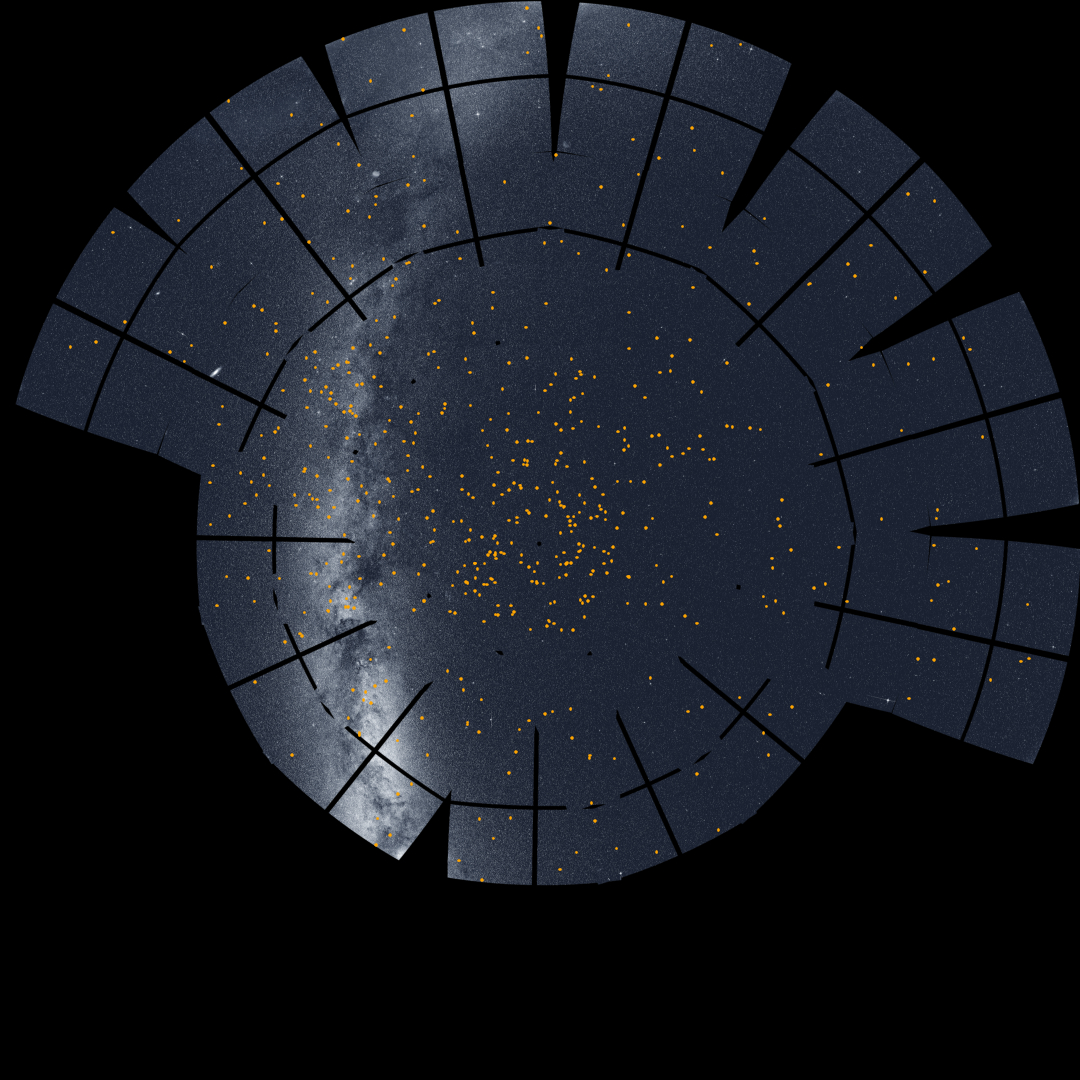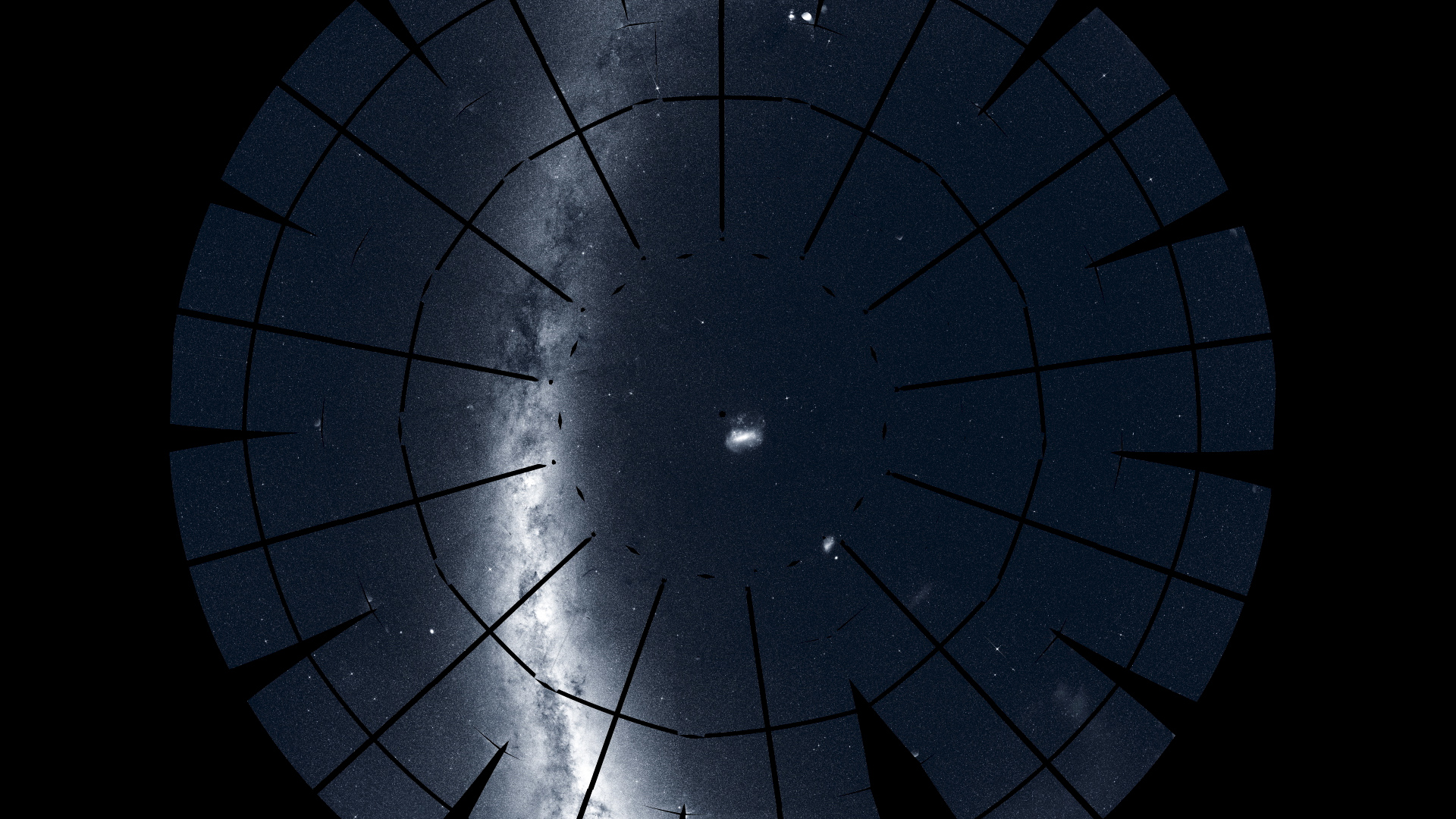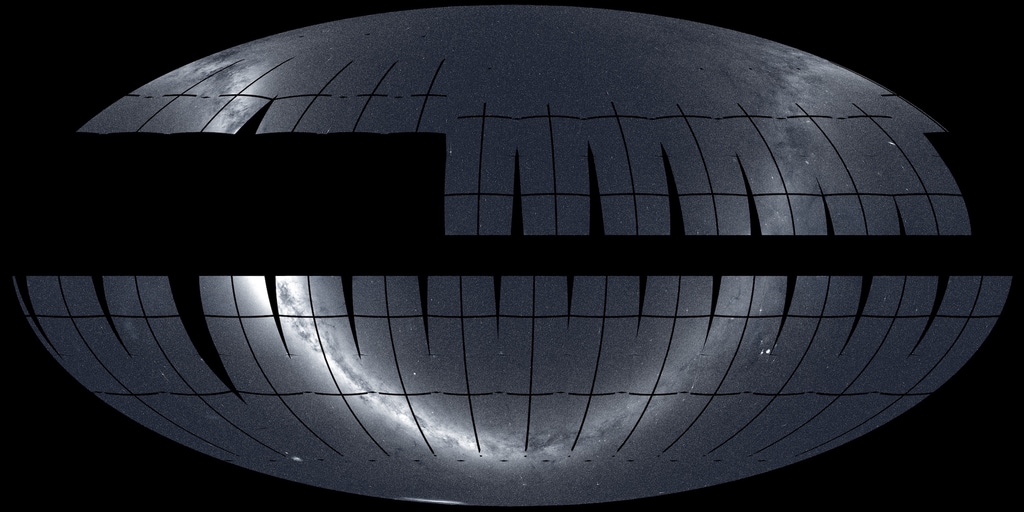TESS 2022 Sky Views

This all-sky mosaic was constructed from 912 TESS images. By late October 2022, when the last image of this mosaic was captured, TESS had discovered 266 exoplanets and 4,258 candidates. The north and south ecliptic poles – the ends of imaginary lines extending above and below the center of Earth's orbit around the Sun – lie at the top and bottom of the image. The Andromeda galaxy is the small, bright oval near the upper right edge. The Lage Magellanic Cloud can be seen along the bottom edge just left of center. Above and to the left of it shine the Small Magellanic Cloud and the bright star cluster 47 Tucanae. Molleweide projection.
Credit: NASA/MIT/TESS and Ethan Kruse (University of Maryland College Park)
NASA’s Transiting Exoplanet Survey Satellite (TESS) is an Explorer-class mission, operated by MIT, that is designed to detect planets passing in front of, or transiting, their host stars. Launched in 2018, TESS completed its primary mission in July 2020 and is now operating in its second extended mission.
The mosaics on these pages combine hundreds of images from all 24°-by-90° sectors surveyed through October 2022, illustrating the mission's progress in mapping the sky. By then, TESS had discovered 266 exoplanets and more than 4,258 candidates.
Prominent features in these images include the Milky Way, a glowing arc that represents the bright central plane of our galaxy, and the Large and Small Magellanic Clouds – satellite galaxies of our own located, respectively, 160,000 and 200,000 light-years away. In the northern sky, look for the small, oblong shape of the Andromeda galaxy (M 31), the closest big spiral galaxy, located 2.5 million light-years away.
In this movie, the TESS all-sky mosaic shown above builds up by showing individual sectors appearing in chronological order. Note that full-resolution movies are brief to conserve space. The full-resolution ProRes version includes an alpha channel.
Credit: NASA/MIT/TESS and Ethan Kruse (University of Maryland College Park)

The entire southern ecliptic sky imaged by TESS is captured in this mosaic. The south ecliptic pole lies at the center, within the dark spot. Below it shine the Large and Small Magellanic Clouds, nearby satellites of our galaxy. The bright band of the Milky Way, the central plane of our galaxy, arcs through the scene at left. As of late October 2022, TESS had identified 179 confirmed planets and 2,522 candidates within this view. Azimuthal equidistant projection.
Credit: NASA/MIT/TESS and Ethan Kruse (University of Maryland College Park))
The TESS southern mosaic shown above builds up by showing individual sectors in chronological order. Note that full-resolution movies are brief to conserve space. The full-resolution ProRes version includes an alpha channel. Frames are available in both high and low resolution.
Credit: NASA/MIT/TESS and Ethan Kruse (University of Maryland College Park)

The entire northern ecliptic sky imaged by TESS is captured in this mosaic. The north ecliptic pole lies at the center. The bright band of the Milky Way, the central plane of our galaxy, arcs through the scene at left. The Andromeda galaxy (M 31) can be seen as a prominent oval at about 10 o'clock. As of late October 2022, TESS had identified 87 confirmed planets and 1,736 candidates in the northern sky. Azimuthal equidistant projection.
Credit: NASA/MIT/TESS and Ethan Kruse (University of Maryland College Park)
The TESS northern mosaic shown above builds up by showing individual sectors appearing in chronological order. Note that full-resolution movies are brief to conserve space. The full-resolution ProRes version includes an alpha channel. Frames are available in both high and low resolution.
Credit: NASA/MIT/TESS and Ethan Kruse (University of Maryland College Park)

All-sky cylindrical (plate carrée) projection of TESS images.
Credit: NASA/MIT/TESS and Ethan Kruse (University of Maryland College Park)
Credits
Please give credit for this item to:
NASA's Goddard Space Flight Center. However, individual items should be credited as indicated above.
-
Science writer
- Francis Reddy (University of Maryland College Park)
-
Visualizer
- Ethan Kruse (University of Maryland College Park)
-
Producer
- Scott Wiessinger (KBR Wyle Services, LLC)
Release date
This page was originally published on Friday, January 20, 2023.
This page was last updated on Wednesday, May 3, 2023 at 11:43 AM EDT.


